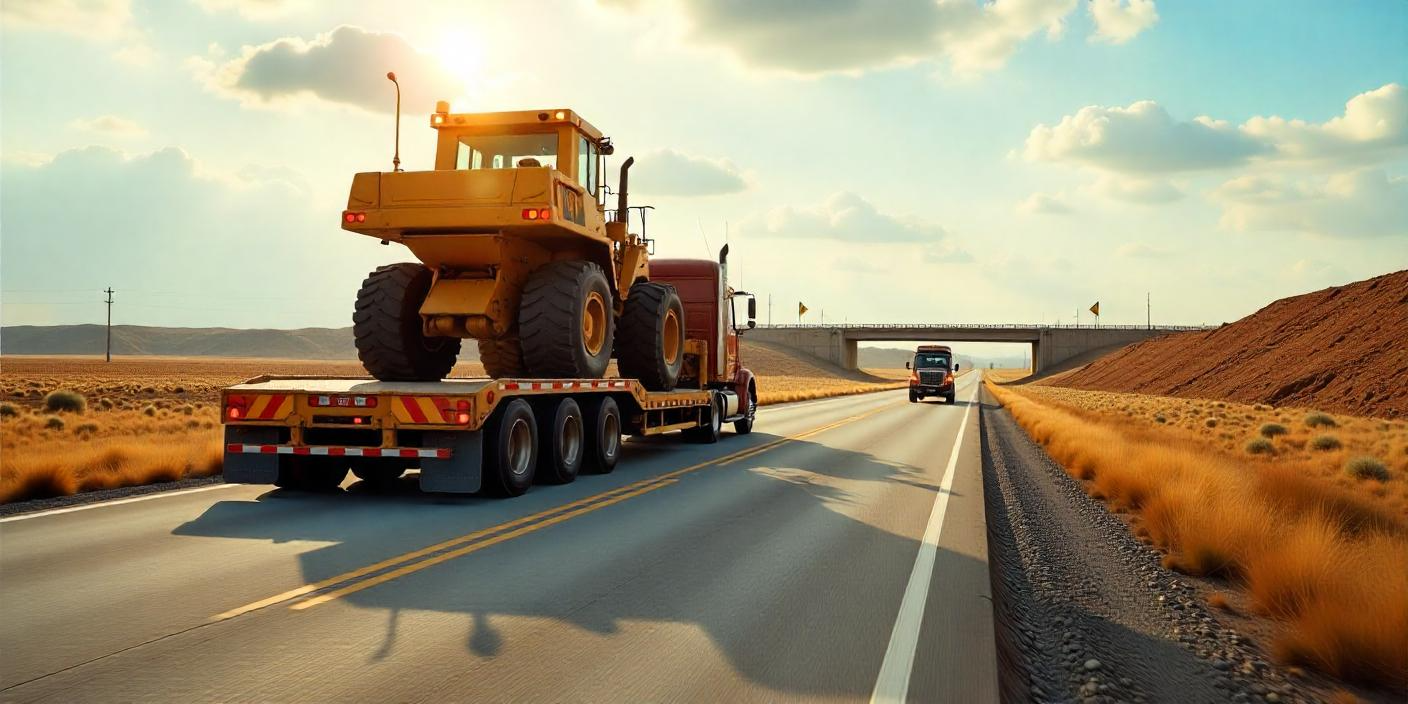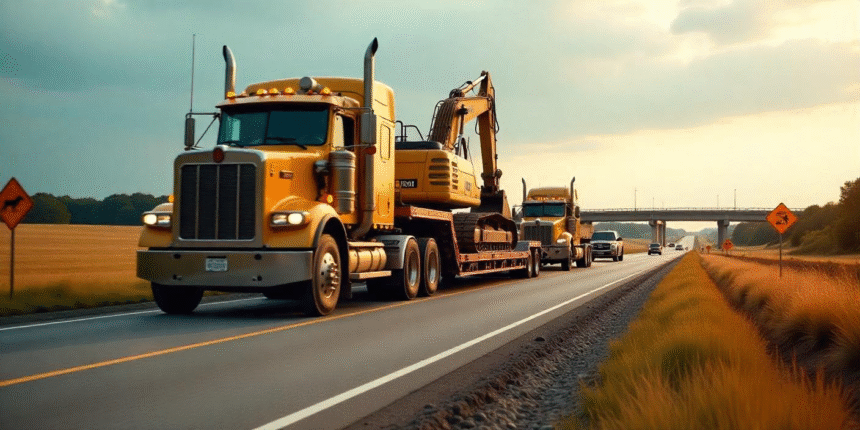Transporting oversized loads – think construction machinery, modular homes, wind turbine blades, or industrial equipment – is no small feat. These behemoths can weigh tens of thousands of pounds and span multiple lanes in width, often requiring specialized trailers, permits, pilot cars, and meticulous route planning.
But while much attention is paid to safety, permits, and logistics, there’s a critical angle often overlooked: road damage.
Yes, oversized transport doesn’t just stress out planners – it can physically stress the very infrastructure it travels on. Let’s dive into the risks of road damage during oversized transport, how it affects local communities, what regulations try to prevent, and how transport companies can mitigate this damage.
1. Understanding Oversized Transport: More Than Just Big Loads
Before we get into the risks, let’s quickly define what counts as an “oversized” load.
In most U.S. states:
- A vehicle is considered oversized if it exceeds 8.5 feet in width or 13.5–14 feet in height.
- Lengths over 53 feet (for a trailer) or weights exceeding 80,000 pounds gross often require special permits.
These loads usually require:
- Specialized multi-axle trailers
- Escorts or pilot vehicles
- Route surveys and bridge clearance checks
- Coordination with state departments of transportation
In short: it’s a full-on operation. But the weight and dimensions of these loads are where the risk to the road begins.
2. Primary Risks of Road Damage During Oversized Transport
Let’s get down to the grit—literally.
a) Pavement Rutting and Cracking
Oversized vehicles can weigh multiple times more than standard trucks. Their concentrated weight can deform asphalt, especially on roads not designed for heavy hauling. This often leads to:
- Rutting (wheel-path depressions)
- Alligator cracking
- Surface spalling
Once these begin, water intrusion and freeze-thaw cycles speed up deterioration, leading to potholes and costly repairs.
b) Bridge and Culvert Strain
Every bridge has a load rating. Exceed it even slightly, and you risk:
- Micro-fractures in support structures
- Long-term weakening of load-bearing joints
- Increased inspection and maintenance costs for municipalities
c) Shoulder Damage
Many oversized loads straddle lane markings or use the road shoulder to maneuver. However, shoulders are typically not built to carry heavy loads, resulting in:
- Edge cracking
- Shoulder drop-offs
- Erosion from displaced soil and gravel
d) Damage to Underground Infrastructure
This one’s stealthy. In urban areas, excessive weight can damage underground utilities like:
- Water lines
- Sewer systems
- Fiber optics
Shifts in soil due to vibration or pressure can create long-term infrastructure headaches.
3. How Weather Can Worsen the Damage
Weather and oversized transport are not a match made in heaven. Wet or hot conditions drastically amplify road vulnerability.
- Rain or snow softens the road subgrade, making it easier for pressure to cause deformation.
- Heat softens asphalt, making it more pliable and more likely to rut or shove under pressure.
Many jurisdictions restrict or ban oversized transport during inclement weather for this reason.
4. Who Pays for Road Damage?
This is the million-dollar (or sometimes multi-million-dollar) question.
In most cases:
- Permit fees collected from oversized haulers like AutoStar Transport Express help fund road maintenance.
- Some states require road bonds or insurance, where companies agree to pay for any damage they cause.
Still, some smaller roads and local municipalities end up footing the bill if damage isn’t directly linked to a hauler.
There’s growing pressure on authorities to improve enforcement and use GPS tracking to pinpoint which haulers used what routes—and when.
5. Smart Route Planning Can Reduce Damage


Avoiding road damage isn’t just ethical—it’s also smart business.
Here’s how savvy oversized haulers reduce risk:
- Use weight-distributing trailers, like hydraulic platform trailers or modular trailers with multiple axles.
- Plan routes on reinforced roads and interstates, avoiding small-town roads where possible.
- Travel during off-peak hours to minimize strain from stop-and-go traffic or heat stress.
- Conduct route surveys to evaluate pavement conditions, bridge ratings, and turning radii.
Technology helps too. Route planning software can identify vulnerable areas and propose alternative paths.
6. Oversized Vehicle Shipping and Public Safety
Beyond infrastructure, there’s a public safety angle. Damaged roads don’t just cost money – they create hazards:
- Sudden potholes increase accident risk.
- Shoulder failures can lead to rollovers.
- Collapsed culverts can disrupt entire communities.
This is why the public has a vested interest in how oversized vehicles are managed—and why government oversight matters.
7. Best Practices for Companies Offering Oversized Vehicle Shipping
Transporters that specialize in oversized shipping – especially companies offering oversized vehicle shipping for industrial clients – must adopt road-friendly best practices.
Here’s what separates pros from reckless haulers:
- Transparent weight reporting
- Ongoing driver training
- Adherence to DOT-approved routes
- Use of smart telematics for load monitoring
- Investing in permit compliance and pre-trip inspections
Companies that cut corners risk lawsuits, damaged reputations, and—yes—even criminal charges in some states.
8. The Regulatory Landscape: Permits, Enforcement & Accountability
Most states in the U.S. have specific offices within their Departments of Transportation (DOTs) that:
- Issue oversize/overweight permits
- Require route and time-of-day restrictions
- Enforce maximum axle loads
DOT inspectors can fine or detain vehicles if violations are detected—especially if they’re seen damaging public infrastructure.
That’s why companies must stay on top of:
- Axle load limits
- Bridge analysis tools
- Permit validity across state lines
9. How the Industry Is Evolving: The Rise of Eco-Conscious Oversized Hauling
As sustainability and infrastructure preservation gain traction, oversized hauling companies are starting to pivot.
Innovations include:
- Electric heavy-duty trucks for short-range heavy hauls
- Advanced route optimization AI
- Low-impact tires and pressure-adjusting suspension systems
Some companies are even coordinating with city planners to schedule hauls during road repaving windows—so any damage is addressed immediately.
It’s a win-win for businesses and the public.
Conclusion:
Oversized transport is essential to construction, energy, and manufacturing—but it doesn’t come without a cost. Road damage from these hauls is a real risk, and left unchecked, it can create a ripple effect of public safety hazards and financial strain on communities.
The good news? With smart planning, strict permit compliance, and a bit of tech-savvy foresight, transporters can minimize the impact while keeping commerce rolling.








